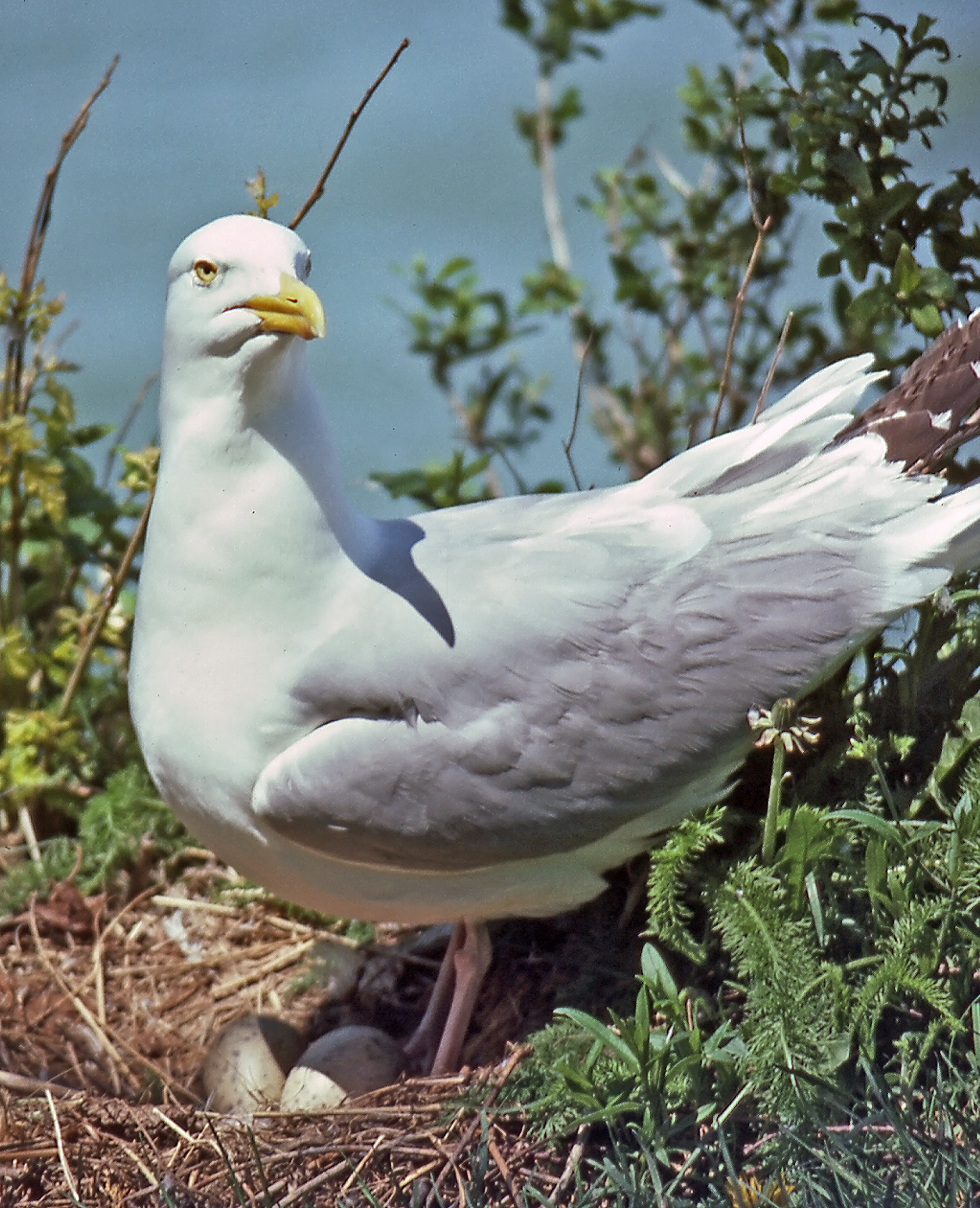- American Herring Gull
Taxobox
name = American Herring Gull
status =

image_width = 250px
image_caption = Adult onnest
regnum =Animal ia
phylum = Chordata
classis = Aves
ordo =Charadriiformes
familia = Laridae
genus = "Larus "
species = "L. smithsonianus"
binomial = "Larus smithsonianus"
binomial_authority = Coues, 1862,North America
synonyms = "Larus argentatus smithsonianus"The American Herring Gull, "Larus smithsonianus", is a largegull , similar to "Larus argentatus", except that immature birds tend to be darker and more uniformly brown.Taxonomy
It was first described as a new species in 1862 by
Elliott Coues based on a series of specimens from theSmithsonian Institute . It was later reclassified as asubspecies of the Herring Gull ("Larus argentatus"). The taxonomy of the Herring Gull group is very complicated and much is still controversial and uncertain. A 2002 study suggested that the American Herring Gull is not closely related to European Herring Gulls, belonging instead to a separateclade of gulls. Several authorities such as the AERC andBOU now recognize it as a separate species. However this has not been adopted by the AOU.Description
Males are 60-66 cm long and weigh 1,050-1,250 grams. Females are 56-62 centimetres long and weigh 800-980 grams. The wingspan is 120-150 centimetres.
Distribution and habitat
The breeding range extends across the northern part of North America from central and southern
Alaska to theGreat Lakes and north-east coast of theUSA south toNorth Carolina . It breeds over most ofCanada apart from the southwest and Arctic regions.Birds are present all year in southern Alaska, the Great Lakes and north-east USA but most birds winter to the south of the breeding range with small numbers reaching as far as
Central America and theWest Indies . Vagrants have reachedColombia andVenezuela and there is a report fromPeru . There are a number of records fromWestern Europe and easternAsia .
Wikimedia Foundation. 2010.
